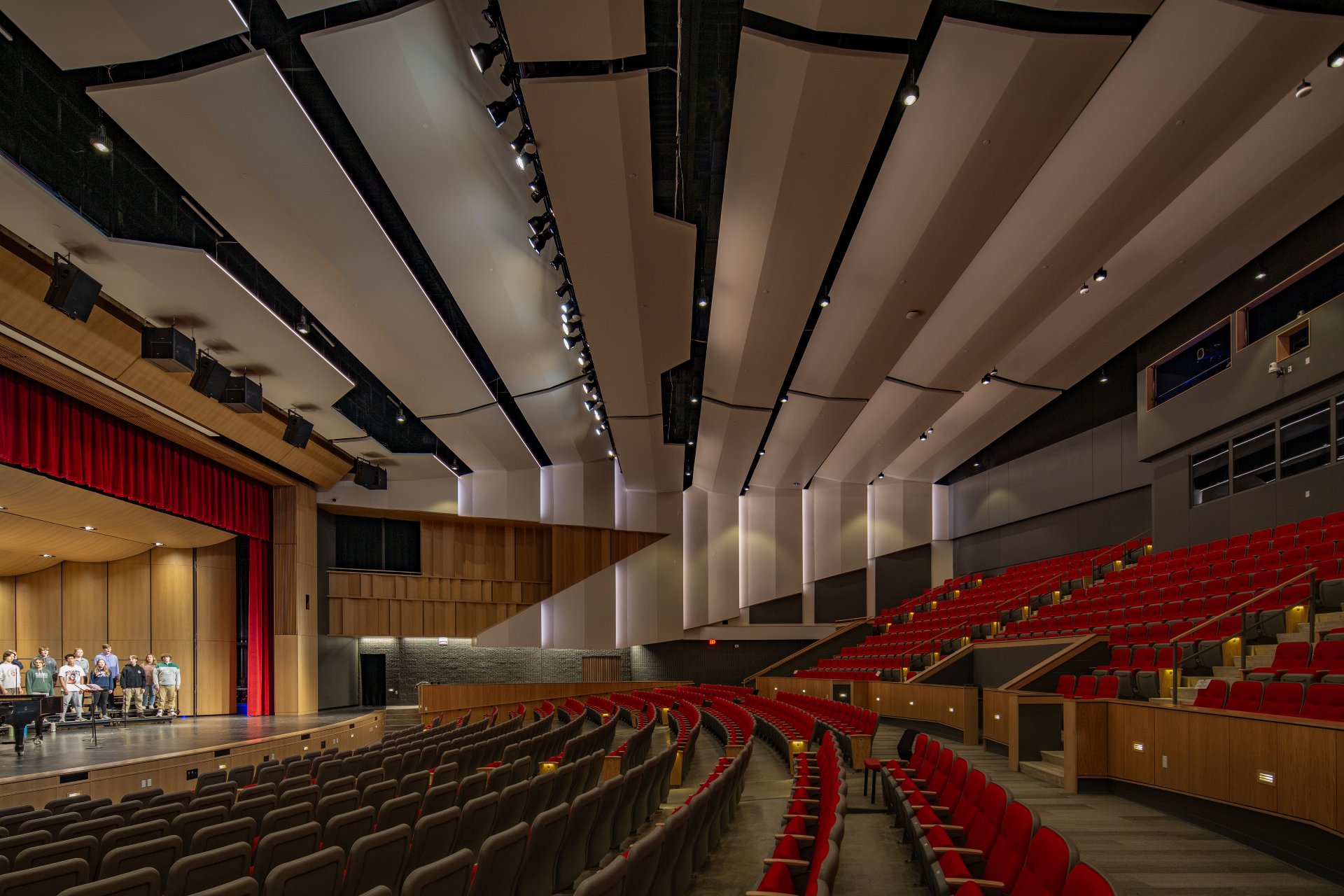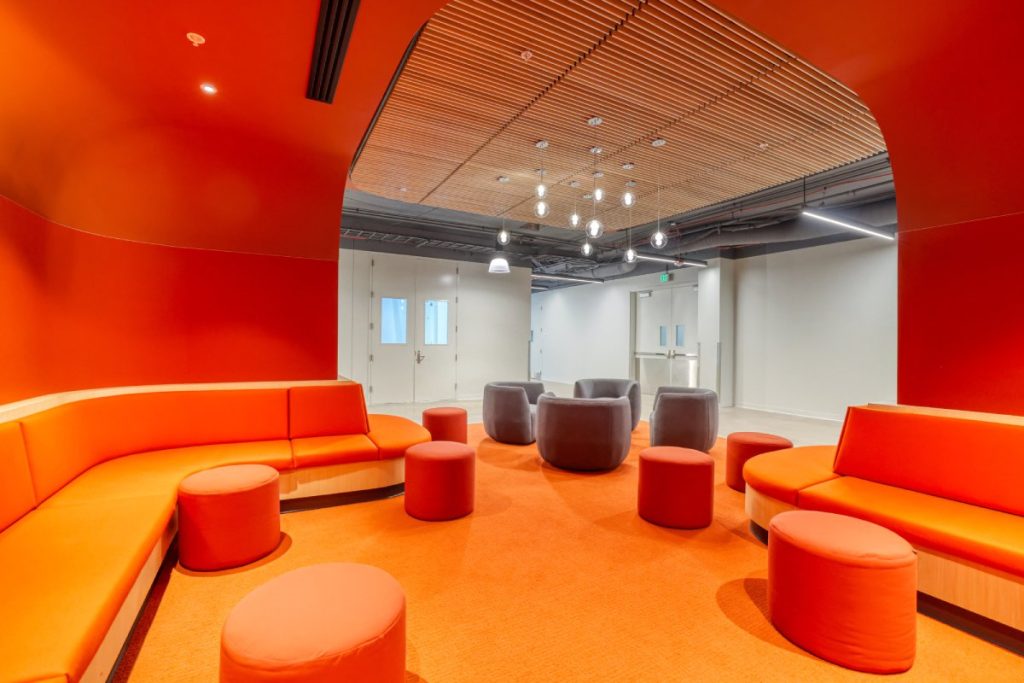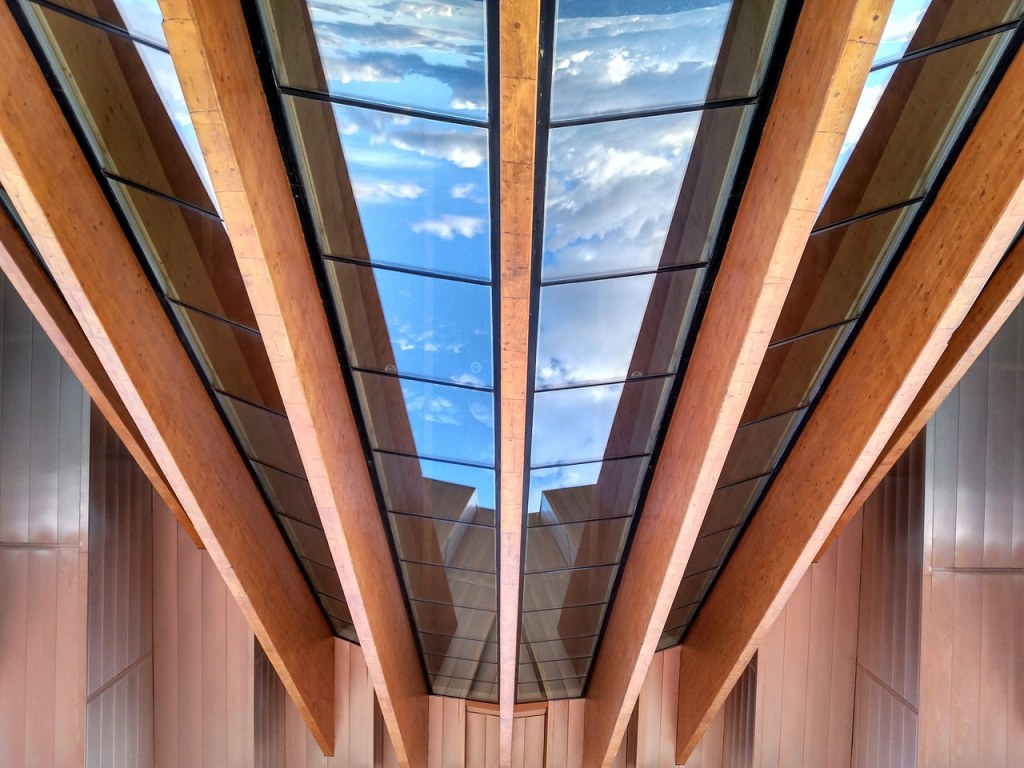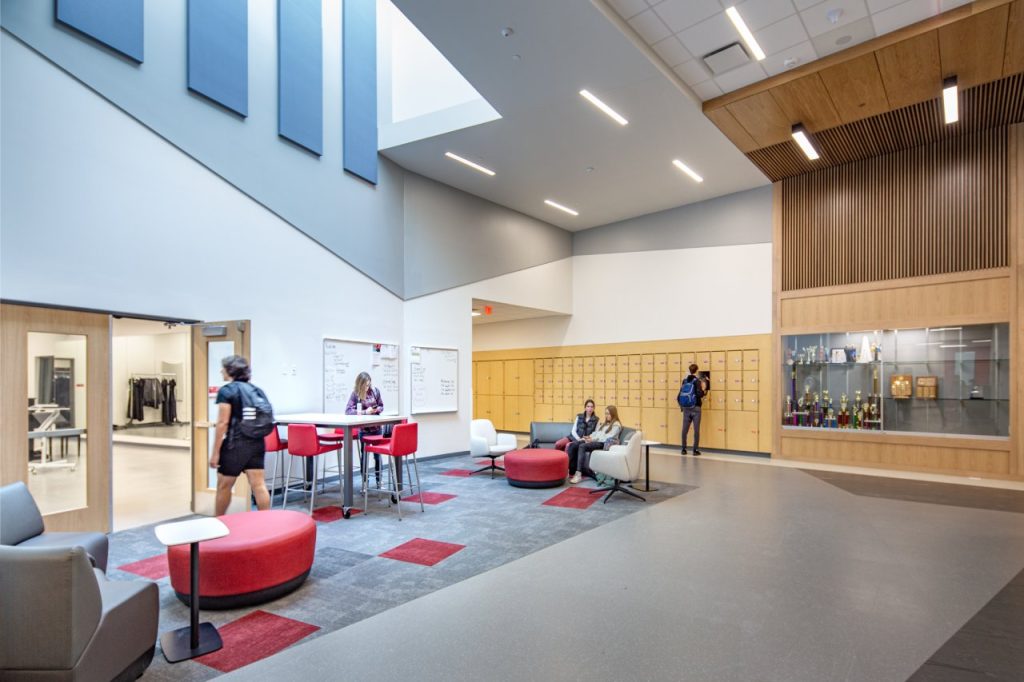
Choosing Building Materials: How to Weigh Durability, Aesthetics, and Sustainability
Choosing building materials for modern architectural projects involves a complex interplay of factors. Today’s commercial and institutional interiors are performance-driven; they must be durable, visually appealing, acoustically functional, and often, sustainable as well. Architects, interior designers, acoustical consultants, and project planners are on the lookout for smart building materials that check all these boxes. As professional spaces continue to double as branded environments for customers and employees, choosing the right ceiling and wall systems has become an increasingly important decision for architects.
In this article, we cover a number of factors influencing the materials selection process and offer guidance from our expansive portfolio of ceilings and walls solutions.
Factors That Influence Material Choice
It’s rare that any one building material is a clear favorite. For any project type, from corporate offices and education facilities to performing arts venues, building materials must meet the functional and design needs of a project while also fitting within logistical and budgetary constraints. In order to develop the best possible material choice and find ceilings and wall systems that align with architectural vision, project goals, and budget, key factors need to be considered.
For instance, in today’s acoustic architecture, materials must not only absorb sound but also elevate the visual identity of the space.
Functional Requirements
One of the first functional considerations is, of course, acoustic performance. From sound quality to acoustic comfort, sound has a direct influence on user experience, productivity, and even health and well-being. The convergence of acoustics in architecture and architectural acoustics is strongly tied to ceiling and wall system choices that absorb or diffuse sound waves effectively.
Wood acoustical panels, perforated acoustic panels, and wood fiber acoustic panels are among the many materials with proven track records in sound management that also offer a range of visual options. Other functional requirements to consider include fire safety ratings and resistance to humidity (which is important in schools, churches, hospitals, and other spaces subject to moisture), ease of cleaning and maintenance (important for long-term care of the interior aesthetic), and compatibility with other installed systems and equipment. The ceiling and wall systems you select must integrate with lighting fixtures, HVAC ductwork, and sprinklers. This is why ceiling panel systems and other modular products like baffle ceiling systems or suspended acoustic ceilings that are designed for easy assembly and compatibility are so important.
Aesthetic & Brand Alignment
The aesthetic intent of a project will strongly influence material choice. Natural wood finishes, for example, add warmth and texture to any interior, making architectural wood products, wood ceiling systems, and other wood products for architecture a frequent choice among architects and designers in hospitality, corporate, and institutional settings.
Patterns and geometry also play an important role: coffered ceiling panels or flat perforated wood panelings send a modern or traditional design message. Ceiling and wall systems form a backdrop for the brand narrative, meaning that architects have a wide canvas on which to make a statement and create both memorable and functional spaces. A ceiling design that complements the overall approach to interior architectural finishes will lift the aesthetic and tie the whole project together.
Installation & Cost Considerations
Installation considerations are also important. Some prefabricated ceiling and wall systems offer faster installation and less onsite labor, but custom solutions are often needed for more special projects that call for unique shapes, finishes, or other specific requests. The trade-offs between initial cost and long-term durability (material and labor) must be considered and priced into budgets.
Another aspect of installation is compatibility with existing ceiling grid or suspension systems. Ceiling beam design, for example, must work with both structural and aesthetic requirements. Whatever system or materials are selected, you must be sure that access for maintenance won’t be an issue.
Architects need partners who understand a variety of project constraints and can offer a wide range of ceiling panel systems and other products. ASI Architectural has been in this business for over three decades, giving us experience and credibility that our customers trust.
Durability vs. Design Intent
In certain architectural spaces, durability is a major challenge for architects, particularly where there is high foot traffic or a need for special acoustic considerations. In these environments, material choice must take into account not just initial visual impact but also long-term durability.
Our acoustic ceiling solutions combine precision-engineered performance with timeless materiality, making them ideal for open offices, lobbies, and classrooms.
When Durability Takes Precedence
Spaces like airports, stadiums, and educational facilities have a particular need for materials and finishes that can stand up to heavy use, exposure to elements and weather, and strict fire safety regulations. Wood fiber acoustic panels, metal ceiling panels, or even robust baffle ceilings are just a few of the durable and resilient products from ASI Architectural that provide strength and long-term resilience while still performing in acoustic areas.
Opting for more resilient materials and finishes can also help to reduce maintenance and cleaning costs while ensuring the space looks its best for many years to come. In these types of environments, durability is going to be a major driver of material choice over purely decorative materials.
Preserving Design Integrity Over Time
In other spaces, where maintaining the appearance is an equally important factor, there are many materials that can help. Perforated acoustic wood panels, for example, allow a balance of sound management while also delivering a more refined and sophisticated aesthetic.
Engineered veneer finishes or fusion wall panels are also a good choice since they are designed to resist fading, warping, and other potential types of damage, while also delivering on superior acoustic performance.
Matching Products to Purpose
Different types of architectural and design projects call for different products, too. Some of the common options include:
- Coffered ceiling panels to add sophistication and a touch of luxury to formal or high-end spaces like boardrooms, lobbies, and reception areas.
- Wood grille ceilings or tongue-and-groove planks for wood ceiling systems that bring warmth and texture to hospitality and other spaces.
- Cloud ceiling panels or cube ceiling tiles for playful visual and acoustic control in creative or dynamic spaces like media rooms or studios.
Matching the right products can help architects and designers tailor solutions to meet both the functional and aesthetic goals of a project. Product selection should also reflect the performance needs of a space, whether that’s managing sound in a bustling open office, enhancing speech intelligibility in a lecture hall, or creating a sense of calm in a healthcare setting. ASI Architectural offers systems with a variety of acoustic ratings, finishes, and installation methods, allowing for greater design flexibility without compromising on technical requirements.
Surface Finishes and Environmental Impact
With the rise of green building requirements, sustainability has become a key factor in the materials specification process. Builders and architects today are looking for environmentally friendly ceiling materials and finishes that not only help reduce the environmental impact of a building and improve the health and comfort of occupants, but can also help contribute to important green building certifications.
Environmentally Friendly Finishes
Low-emission coatings like low-VOC coatings, natural stains, and water-based finishes can all help minimize indoor air pollution while also improving durability and appearance.
Sourcing wood from FSC-certified forests helps to ensure that wood architectural products are used responsibly and from well-managed forests. Environmentally friendly finishes do more than protect the planet; they also help to protect occupants and improve the indoor air quality within a building.
Acoustic Materials with Green Benefits
Sustainable acoustic solutions are also becoming more popular. Wood fiber acoustic panels, for example, are made with renewable materials, helping to reduce your reliance on more synthetic acoustic ceiling products.
Metal ceiling panels are another sustainable solution, particularly when made with a high recycled metal content. Innovative perforated wall panels can improve sound absorption, often eliminating the need for additional sound masking devices and reducing the energy consumed by these units and the wiring complexity.
Supporting Certifications & Credits
Clients also often want to achieve certain certifications such as LEED v4.1, WELL Building Standard, and others that put a strong emphasis on material transparency, low emissions, and acoustic comfort. To meet these expectations, architects and designers must be intentional with product selection, choosing materials that are responsibly sourced, tested for indoor air quality, and contribute to acoustic performance goals. Deciding on ceiling and wall systems that align with these standards not only supports certification efforts but also enhances occupant well-being, productivity, and overall experience in the space.
Partnering with ASI for Smart Material Selection
Selecting building materials for architectural projects is a process that requires input and expertise from both people and companies. ASI Architectural offers extensive experience and a broad range of ceiling and wall systems that can help architects and designers craft spaces that strike the right balance between aesthetics, acoustical performance, and sustainability.
Customization with Confidence
Fusion wood products from ASI Architectural come in a range of colors and textures, which allow architects and designers to achieve unique finishes that perfectly match their design intent.
Custom coffered ceiling panels or sophisticated beam ceiling systems can also add a touch of architectural drama to interiors.
The Microperf and StrandTec technologies we offer also help to add visual texture to a space while also improving the acoustical performance of a room.
Ceiling and wall panels that match across an entire space also create a seamless and consistent design language that helps to elevate any interior design.
From dramatic coffered features to minimalist suspended systems, ASI Architectural enhances ceiling design for commercial interiors with both standard and custom solutions.
Support for Architects & Designers
ASI Architectural’s commitment to architects and designers goes beyond just supplying the products. Samples, as well as detailed product data and acoustic test results, are all available to help architects make the right decisions. ASI Architectural also provides design assistance and installation consultation to ensure that your projects can be executed smoothly from concept to completion.
ASI offers wall paneling for architects seeking materials that integrate form, function, and acoustic precision without compromising design vision.
Bringing Form, Function, and Acoustics Together
In a market where commercial and institutional interiors are driven by a need to impress visually while also performing at very high levels, it can be difficult to find the right building materials for architectural projects.
ASI Architectural is a partner that can help you find a range of ceiling and wall systems that can satisfy this demand and include innovative solutions such as wood acoustical panels, perforated acoustic panels, baffle ceiling systems, and more. By carefully considering the key factors of functional requirements, brand alignment, and environmental impact, architects and builders can make better decisions that help them choose the right materials for the right spaces, helping to create impressive and high-performing spaces that will stand the test of time.
Explore more of ASI Architectural’s educational content on wood products in architecture including our hardwood vs. softwood guide and how nature is artistry in wood.
Contact ASI Architectural today to request samples or to discuss your next project and learn how we can help with design collaboration and material specification.








